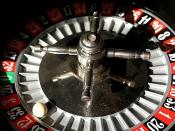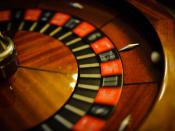An alleged high-tech roulette scam that saw three people walk out of a London casino with ý1.3 million recently sounds too implausible even for a movie plot.
But a physicist who developed a technology-based system that famously beat the wheel in the 1970s has told New Scientist that in theory it would have been fairly easy to carry out with a little know-how and the right tools.
Two men and a woman were arrested on 16 March after raking in a huge win over two evenings. Suspicious casino staff are said to have reviewed videotapes of the players and called in the police, whose investigation is continuing. The trio are now on bail and have not been charged with any crime.
Some media reports have suggested they used mobile phones fitted with laser scanners to measure the speed of the roulette ball when it was released, in order to calculate where it was likely to fall.
The whole calculation would need to have been completed in just a few seconds, as the dealer cuts off betting after the ball has rolled three times around the wheel.
But the trick could be pulled off a lot more simply if the phones were used as stop watches, says Norman Packard, a physicist at the Santa Fe Institute in New Mexico, US.
Packard should know. In the late 1970s, he and a group of other physics graduate students set out to create computers that could compute the sector of the wheel a roulette ball would land in. They hid these computers under their clothes or in their shoes, clicking buttons with their toes.
"In the best circumstances, we could predict the quadrant correctly," says Packard. "We definitely got to the point where we were winning money, but we didn't continue long enough...


